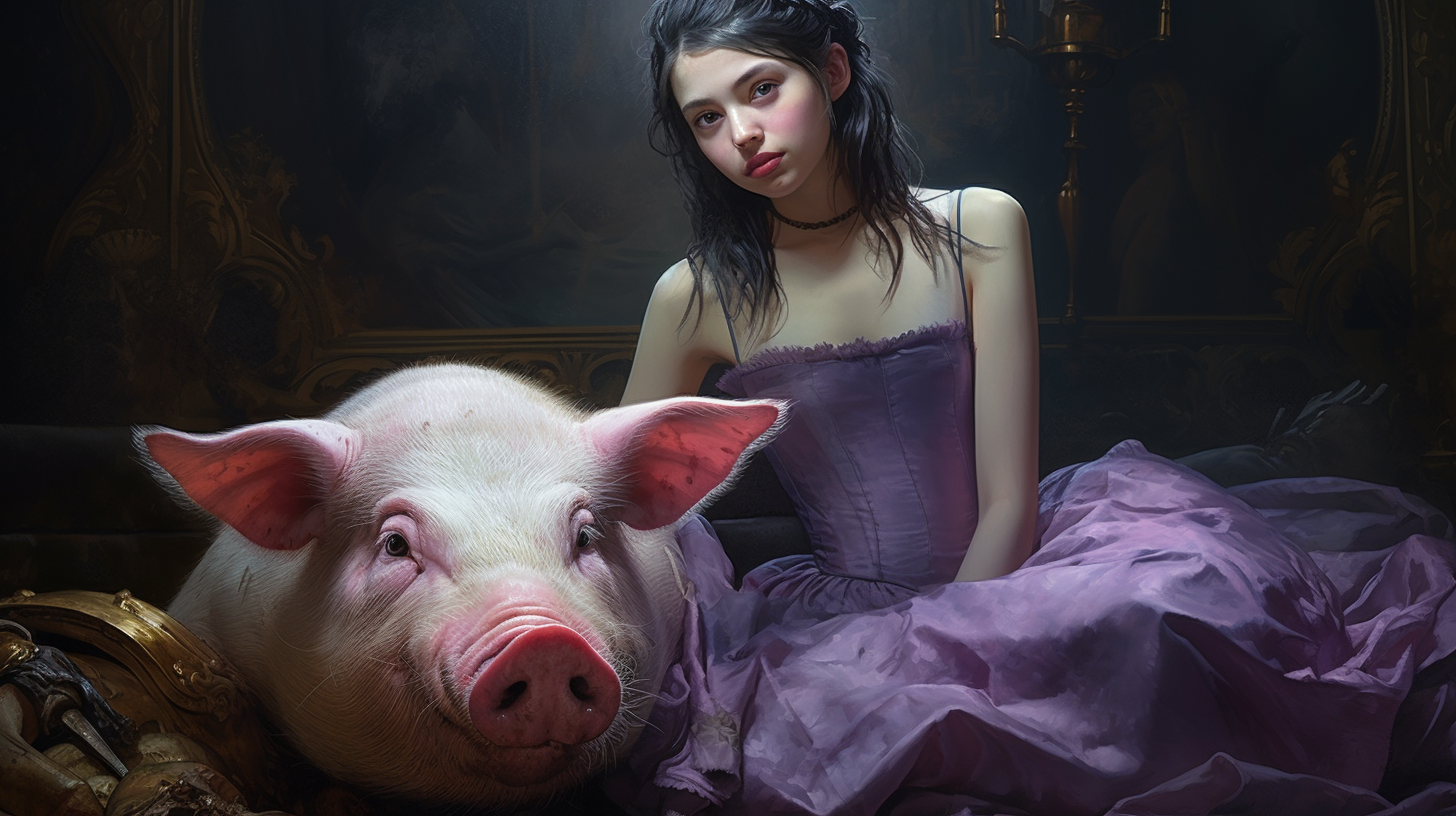Social Expectations Leave Us Disfigured
What Rod Serling teaches about gender dysphoria

Imagine living every day with a disfigurement. Not living with a feature you would like to change - living with a feature so abhorrent, an aspect of yourself so horrific, it silences your sense of political correctness sufficiently to consider it a disfigurement. A marring of body, mind, or communication so deep it wounds your soul.
Now imagine - to your surprise - others don't even notice your disfigurement. This is both blessing and curse. You are not mocked, shamed, or shunned for your hated feature. In that, you could take some solace.
But other people go as far as to compliment your disfigurement - to consider it a source of beauty. Some even advise you to love it as well as they do. Secretly, we hate those people - well-meaning though they are - for encouraging us to embrace our disfigurement. They are fools; anybody with true sight will see us as we are: disfigured.
Perhaps my thought experiment required little explanation. Perhaps you don't need to imagine living with a disfigurement - perhaps you know exactly which features you hate about yourself.
Maybe your bright smile is a bit too wide. Maybe your cut pecs are a source of masculine shame. Maybe your blue, almond-shaped eyes disgust you with their upturned tilt. Maybe you would willingly trade your 36C bust, your six-pack abs, your hourglass figure - just to be normal.
The wisdom of Rod Serling
In 1960, Rod Serling created an episode of "The Twilight Zone" titled "Eye of the Beholder." As the story begins, we hear surgeons murmuring about their patient, Janet Tyler, and her disfigurement.
Janet has undergone ten corrective surgeries to no avail. But the surgeons are adamant enough about her horrifying appearance to perform one final operation. They hope Janet can be cured and live a normal life.
We see no faces - the surgeons are shadows, Janet's head is wrapped tightly in bandages. We wonder at the disfigured face hidden beneath the gauze.
As the bandages are removed, gasps of disgust erupt from the surgeons. The operation has failed yet again - the dream to grant a disfigured patient a new life is shattered. This time, the surgeons give up. No more will they try to fix Janet - she has reached the limit of their skill and the limit of the health care system.
As this proclamation is made, our first glimpse of both surgeons and patient disarms us.

The patient is - at least according to fashion and social expectations of 1960 - a beautiful blonde woman who would not be out of place cast as Marilyn Monroe's roommate in the latest screwball comedy. The surgeons, on the other hand, have deep-set, discolored, angry eyes; extended, wrinkled, porcine noses; drooping cheeks; and frozen smirks Billy Idol would covet.
Of course, the juxtaposition of the weird with the world as we expect it is precisely what makes "The Twilight Zone" worth watching. The story in this episode explained failing to meet social expectations in a visceral way since I first saw the episode in a "New Year Twilight Zone Marathon" on television station KTLA in the early 1980s.
War of the cliques
Were all eleven operations performed because Janet wanted them? Or did society - and the surgeons - believe they had the right or moral obligation to fix her?
In the end, Janet gets sent away to be with her "own kind." But we are intended to view the porcine surgeons as the horror. The beautiful blonde is "normal," not the surgeons. This sense of injustice illuminates the deep-seated pain of not matching up to social expectations.
Each of us walks a fine line between fitting in and expressing our unique nature. We choose to be different - to dress differently, think differently, act differently - but we choose to distinguish ourselves from the rest of humanity. At the same time, we strive not to stray too far, not to appear too outlandish, not to fit into any clique.
Much of my life, I stuck with the Outlandish. I dyed my hair jet black and wore heavy eyeliner and black lipstick. Even today, I dye my hair purple - I am still Outlandish. We Outlandish know those who aren't outlandish - the Normals - look at us with the same sense of prosthetic shame we Outlandish use to look at them.
Our clique is normal. Any clique into which we do not fit is weird.
Who is the beautiful set of people? The Outlandish or the Normals?
Who expresses humanity appropriately? The surgeons or beautiful blonde Janet?
Who owns the truth?
No matter our clique, no matter if we appear outlandish to another clique, our society is built around some people conforming to social expectations and others contradicting them. As the saying goes, there is no light without shadow to distinguish it. It’s how society works as well as how it evolves.
The specific environment is irrelevant, the particular expectations - whether Outlandish or Normal - are irrelevant. What is relevant is our desire to fit ourselves into the social environment and the level of difficulty we experience in the process.
To return to the disfigurements we bear daily, simple courtesy prevents us from publicly regarding ourselves or others who appear similar as truly disfigured. We wish we could change our presentation: our voice, our laugh, our height, our weight, our social status.
And some aspects of our identity are malleable: through surgery, we can change certain features to match our expectations. But whether the social environment shares our expectations, views us as disfigured, or accepts our changes does not affect our deep-seated desire for change.
The social environment is not "right" or "appropriate" - the social environment is only larger than you. The social expectations are only common and frequent - this is the definition of a social environment.
Human expression of identity is not subject to value judgment. It simply is. What we want to do and be is our choice. Who we are does not belong to any social environment purely because there are more people in it who disagree.
The truth has been obvious
In that sense, none of us is disfigured. We only focus on too small a slice of humanity to appear different to the social environment. But the alienation we feel is no less real. That sense must be respected. We must discover who we are, honor it, and live it if at all possible.
Countless studies, every philosophy across human history, and simple common sense all scream an inexorable truth: when we are true to the person we know we are, we are happier people. When we are happier people for having accepted ourselves, we expect others to do the same and are more tolerant toward them.
This is not a revolution in thought. This is behavior we observed on the elementary school playground.
What is your disfigurement? What would you change? Why is it a secret source of shame, and is that shame embodied in a social environment that does not judge you as harshly as you judge yourself?
That every human possesses a sense of disfigurement implies your sense of disfigurement is normal. Painful, yes - but a typical human experience. The experience almost certainly relates to your expression of gender, whether implicitly or explicitly. The pain you sense is gender dysphoria.
Next week, I will relate the level of pain at failing to meet social expectations and its encompassing nature to the transgender experience - which is, of course, only another typical human experience.




